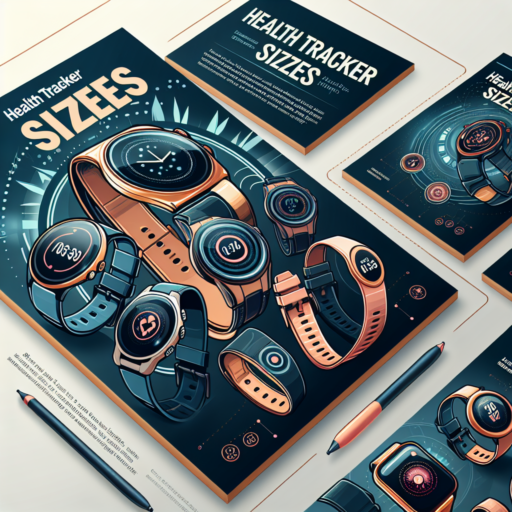No se han encontrado productos.
What size is the Fitbit Sense watch?
Understanding the size of the Fitbit Sense watch is crucial for potential wearers, as it affects both comfort and style. The Fitbit Sense, known for its advanced health and fitness tracking features, has been designed to fit a wide range of wrist sizes comfortably. Its physical dimensions are an essential aspect to consider before making a purchase.
The watch case of the Fitbit Sense measures approximately 40.48mm in height, 40.48mm in width, and has a depth of 12.35mm, making it a relatively sleek option compared to other smartwatches on the market. This compact size ensures that it doesn’t feel overly bulky on the wrist, maintaining a balance between functionality and fashion.
Moreover, the Fitbit Sense comes with a small and a large band to accommodate various wrist sizes. The small band generally fits wrists 140 – 180mm in circumference, while the large band is suitable for wrists 180 – 220mm in circumference. This versatility ensures that most individuals can find a comfortable and secure fit, enhancing the overall user experience. Whether you’re engaging in intense workouts or simply wearing the device throughout the day, the Fitbit Sense’s size is designed to ensure maximum comfort without compromising on style.
How big is a Fitbit Sense screen?
The screen size of the Fitbit Sense is a crucial detail for potential users who prioritize display quality and readability in their smart device. The Fitbit Sense boasts a high-resolution, color AMOLED touchscreen that enhances user interaction through vibrant visuals and sharp text. This makes navigating through menus, reading notifications, or checking your stats a visually pleasing experience.
Specifically, the Fitbit Sense features a 1.58-inch display, providing ample space for users to engage with the device’s various health-tracking functions and smart features without overwhelming the wrist. Such a size strikes a perfect balance between usability and comfort, making it ideal for day-long wear. Moreover, the 336 x 336 pixel resolution ensures that the screen displays information crisply, enhancing the overall user experience.
Furthermore, the design of the Fitbit Sense screen is thoughtfully crafted to complement its size. With a slightly curved glass surface, users enjoy not only an aesthetic appeal but also improved screen readability from various angles. This attention to detail in design speaks to the device’s aim to offer a seamless and user-friendly experience.
What are the dimensions of a Fitbit?
Understanding the dimensions of a Fitbit is crucial for potential buyers and fitness enthusiasts who want to ensure they choose a model that fits comfortably on their wrist and meets their style and functional requirements. Fitbit, a leading brand in wearable fitness technology, offers a range of devices, each with its unique set of dimensions tailored to cater to a diverse user base.
The dimensions of a Fitbit vary significantly across different models. For instance, the Fitbit Charge series boasts a slim and sleek design, making it an ideal choice for those who prefer a more discreet fitness tracker. On the other hand, the Fitbit Versa series offers a larger display, catering to users who prioritize easy readability and a smartwatch-like experience. Each model’s specific dimensions are designed to ensure a comfortable fit and optimal user experience, whether you’re engaging in daily activities or rigorous workouts.
It’s also important to consider the width, thickness, and band size when exploring the dimensions of a Fitbit. These factors play a pivotal role in overall wearability and comfort. For example, individuals with smaller wrists may find models with slimmer bands and smaller face dimensions more comfortable, while those with larger wrists may opt for devices with broader bands and larger displays. The choice of materials, from durable elastomer to flexible woven bands, also affects the device’s dimensions and feel on the wrist.
What is the difference between the Sense and the Sense 2?
Comparing the Sense and Sense 2 reveals a thoughtful evolution in design and functionality, aimed at enhancing user experience. Initially, the Sense series captured attention for its health-focused features, but with the advent of the Sense 2, improvements in hardware and software are evident. This comparison seeks to elucidate the distinctions that set apart the second iteration from its predecessor, shedding light on the progress made in wearable technology.
The first notable difference lies in the design aesthetics and the physical build. The Sense 2 showcases a slimmer profile and a more refined finish, signifying a shift towards greater comfort and elegance. Moreover, the incorporation of a new, more durable material in the construction of the Sense 2 not only enhances its elegance but also its resilience to daily wear and tear, an upgrade avidly welcomed by users seeking both style and durability in their wearable devices.
Another area where the Sense 2 excels is in its advanced health monitoring features. While the original Sense set the bar high with its innovative health and wellness tools, the Sense 2 takes it a step further by introducing additional sensors and improved algorithms. This boosts the device’s accuracy in monitoring vital health metrics, including heart rate, sleep patterns, and stress levels. Consequently, users gain deeper insights into their health, allowing for a more informed and proactive approach to wellness.

